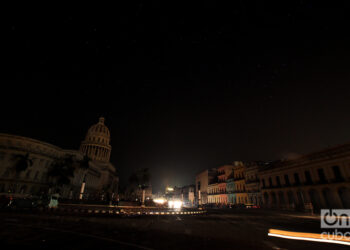The Museum of Modern Art (MoMA) of New York is announcing the exhibition of a program of Cuban films that have been censored on the island. From March 9 to 11, 10 films, between shorts and feature-length documentaries and fiction films, will be screened in the halls of that important artistic institution.
The exhibit, titled Cuban Cinema Under Censorship, aims to be an anthology of more than half a century of vetoed films. It is collateral to the installation Untitled (Havana, 2000), by Cuban artist Tania Brugueras, being displayed there since early February, and which will be closed with this film exhibit.
The selection of films, curated by Cuban critic Dean Luis Reyes, is headed by the one that continues being the foundational moment of the interdiction from power of Cuban filmmakers: PM (Orlando Jiménez Leal and Sabá Cabrera Infante, 1961). The censorship of this short by the Cuban Film Institute gave rise to the first definition of the cultural policy of the nascent socialist Revolution led by Fidel Castro, who thus left defined the margins of the admissible within culture and art in Cuba.
PM was never publicly exhibited on the island (after 1961) until 1994. During the 16th International New Latin American Film Festival of Havana it was included in a program titled “A Glance at Cuban Cinema.”
Moreover, Conducta impropia (Improper Behavior; Orlando Jiménez Leal, Néstor Almendros, 1983), although it was not produced in Cuba, was vetoed in the country. It denounced the systematic persecution and repression of the gay community; as well as the intelligentsia “out of line” with demands in force in Cuba during the initial stage of the Revolution.
While in the following decades censorship in national cinema in general was discussed within ICAIC, the country’s principal producer, in the new century, with the emergence of a cinema independent from the State institutions and editorial criteria, the list of works that were censored or made invisible increased.
Seres extravagantes (Extravagant Beings; Manuel Zayas, 2004) complements the questioning of Conducta impropia two decades later, as a documentary, and Santa y Andrés (Carlos Lechuga, 2016) as fiction – the latter went through a public state veto, compared to the majority of recent films.
Seres extravagantes, which was clandestinely filmed in Cuba and was never shown there, narrates the process of marginalization and repression of homosexuals during the 1960s and 1970s through the biography of writer Reinaldo Arenas, told by him and by other intellectuals and artists who shared his life and suffered the repression of a system that named them “extravagant.” For a long time, none of them really existed, they were no-persons.
Persona (Eliécer Jiménez, 2016), Nadie (No One; Miguel Coyula, 2016), Crematorio (Crematorium; Juan Carlos Cremata, 2013), Despertar (Awakening; Ricardo Figueredo, Anthony Bubaire, 2011) and El tren de la línea norte (The Northern Line Train; Marcelo Martin, 2015) are some of the works, fundamentally of the documentary genre, which in the last decade have been vetoed and suffered invisibility due to political reasons.
El tren de la línea norte was never commercially screened in Cuba, despite having participated in film festivals, like the 2015 International New Latin American Film Festival of Havana, that of Huelva, in Spain, and having won the prize in its category in the No-Profit International Film Festival of Gibara, Cuba, as well as the Caracol prize, which is annually given by the Union of Writers and Artists of Cuba (UNEAC), and having participated through ICAIC in the Havana Film Festival of New York. The director was never notified about the reasons for its exclusion from the screens, despite his interest in premiering it.
Despertar is an approximation to the life of Raudel Collazo Pedroso, a Cuban rap musician from the hip-hop group Escuadrón Patriota, which is characterized for its strong criticism of the Cuban government. The film was excluded from the Young Exhibit, which Film Institute organizes, “for not forming part of ICAIC’s cultural policy.” The director of the Exhibit, filmmaker Fernando Pérez, resigned from his post in 2012 after expressing his disagreement with that decision.
There are also two of the works that comprise the Crematorio tetralogy, which Juan Carlos Cremata started shooting in Cuba under the production of the Film Institute, and which was paralyzed, until its director finished it outside the island. Crematorio started being a collective work made up by several stories, but after the exhibition of the first in the inauguration of ICAIC’s 2013 Young Exhibit, the Institute banned its premiere.
Tradition
MoMA’s interest in the Cuban audiovisual production is not new. In 1972, after the holding in the Manhattan Olympia movie theater of a Cuban film festival sponsored by American Documentary Films Inc., MoMA requested exhibiting in its venue a program of the documentaries participating there. Among those titles were classics of ICAIC’s production like Tercer Mundo, Tercera Guerra Mundial (Third World, World War Three; Julio García Espinosa). Muerte al invasor (Death to the Invader; Tomás Gutiérrez Alea), Historia de un ballet (History of a Ballet (José Massip) and Now, 79 primaveras (70 Springs), Ciclón (Hurricane), among others, by Santiago Alvarez.
More recently, the 2013 Documentary Fortnight organized a program titled New Cuban Shorts, in collaboration with Americas Media Initiative – Cuba Media Project (AMI-CMP). And in 2014, as part of a Latin American film program, it included the feature length Melaza (Molasses; 2013), from the then debutant Carlos Lechuga.
On February 16 and 17, 2015 it programed the long documentary Hotel Nueva Isla, directed by Irene Gutiérrez Torres and Javier Labrador, also part of the series Documentary Fortnight, of the International Non-Fiction Festival, which the New York institution organized during that month. As part of the series New Cuban Shorts, that same year, young filmmakers Armando Capó and Ariagna Fajardo participated in the MoMA sessions with a selection of their works.
Neither is this the first time that MoMA deals with this type of subject. In October 2014 it held the exhibit Spain (Un)Censored, where it screened films of directors who, during the Franco regime, were able to get around the censorship by telling the story they wanted. Among them was the classic Muerte de un ciclista (Death of a Cyclist; Juan Antonio Bardem).










